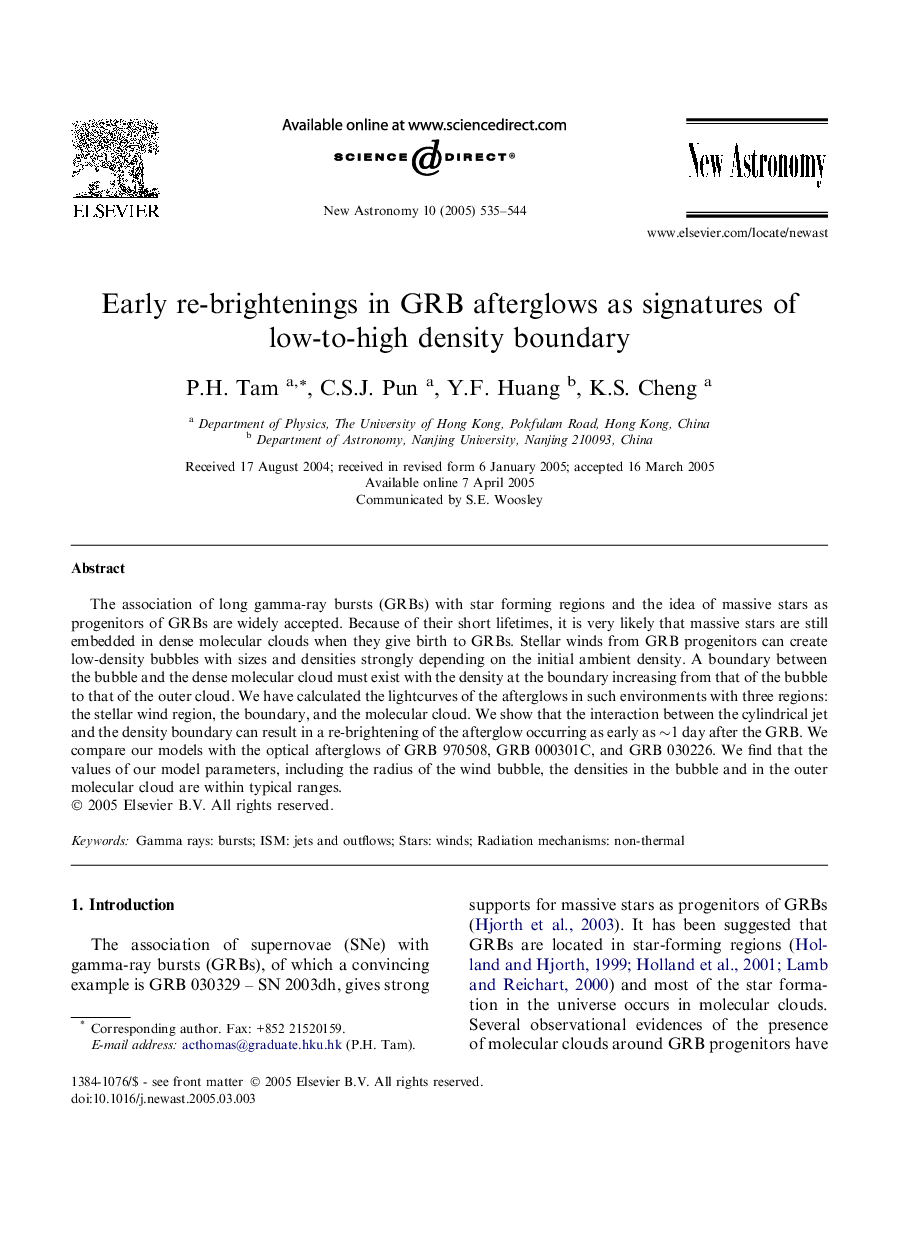| Article ID | Journal | Published Year | Pages | File Type |
|---|---|---|---|---|
| 10704906 | New Astronomy | 2005 | 10 Pages |
Abstract
The association of long gamma-ray bursts (GRBs) with star forming regions and the idea of massive stars as progenitors of GRBs are widely accepted. Because of their short lifetimes, it is very likely that massive stars are still embedded in dense molecular clouds when they give birth to GRBs. Stellar winds from GRB progenitors can create low-density bubbles with sizes and densities strongly depending on the initial ambient density. A boundary between the bubble and the dense molecular cloud must exist with the density at the boundary increasing from that of the bubble to that of the outer cloud. We have calculated the lightcurves of the afterglows in such environments with three regions: the stellar wind region, the boundary, and the molecular cloud. We show that the interaction between the cylindrical jet and the density boundary can result in a re-brightening of the afterglow occurring as early as â¼1 day after the GRB. We compare our models with the optical afterglows of GRB 970508, GRB 000301C, and GRB 030226. We find that the values of our model parameters, including the radius of the wind bubble, the densities in the bubble and in the outer molecular cloud are within typical ranges.
Related Topics
Physical Sciences and Engineering
Physics and Astronomy
Astronomy and Astrophysics
Authors
P.H. Tam, C.S.J. Pun, Y.F. Huang, K.S. Cheng,
